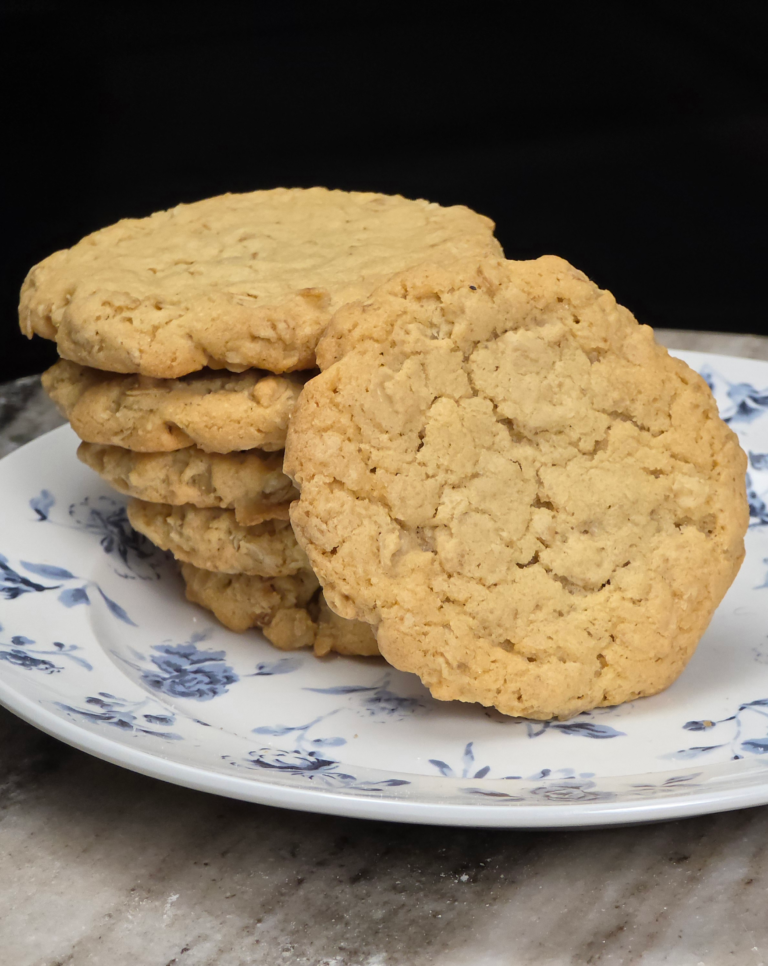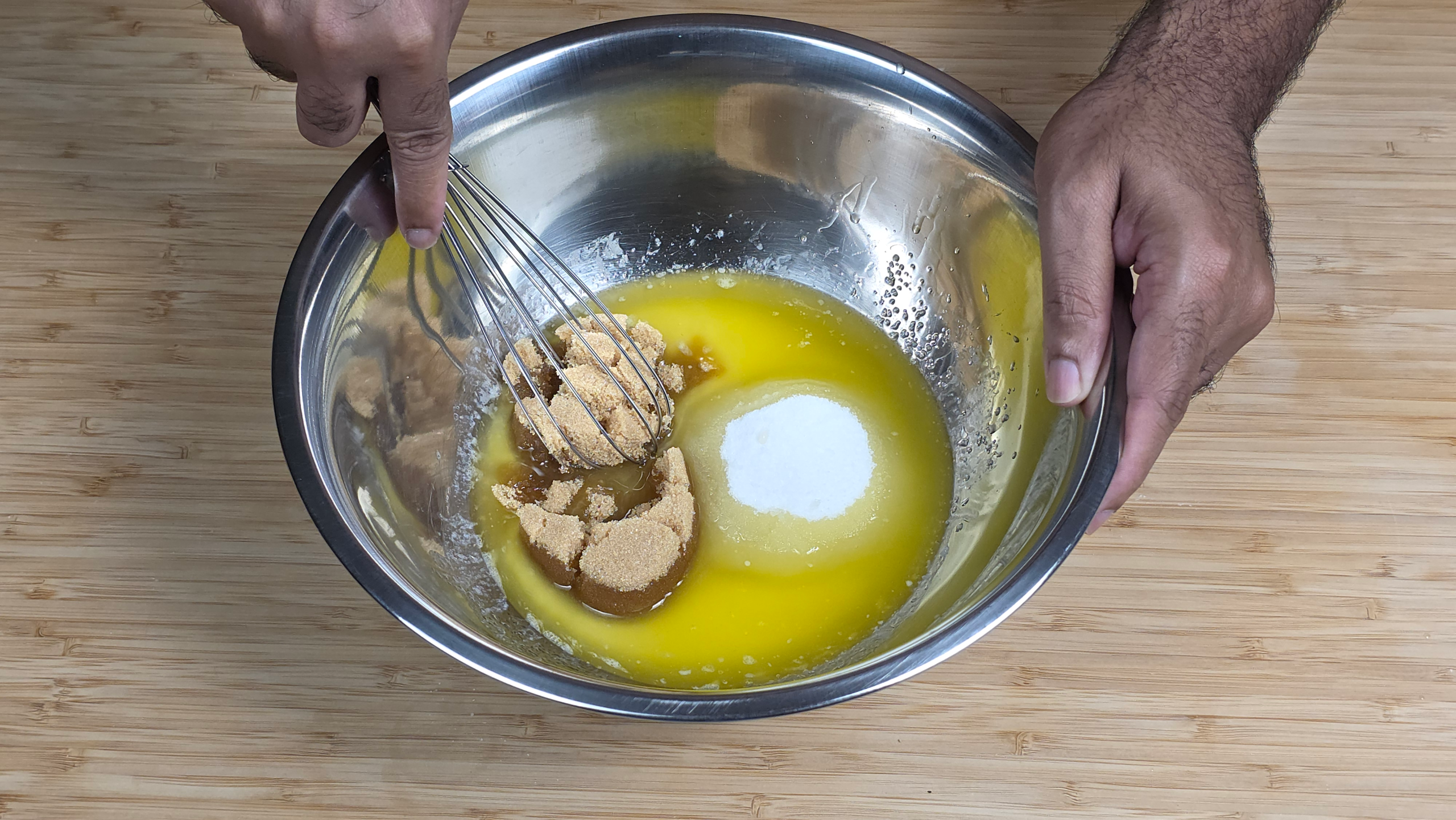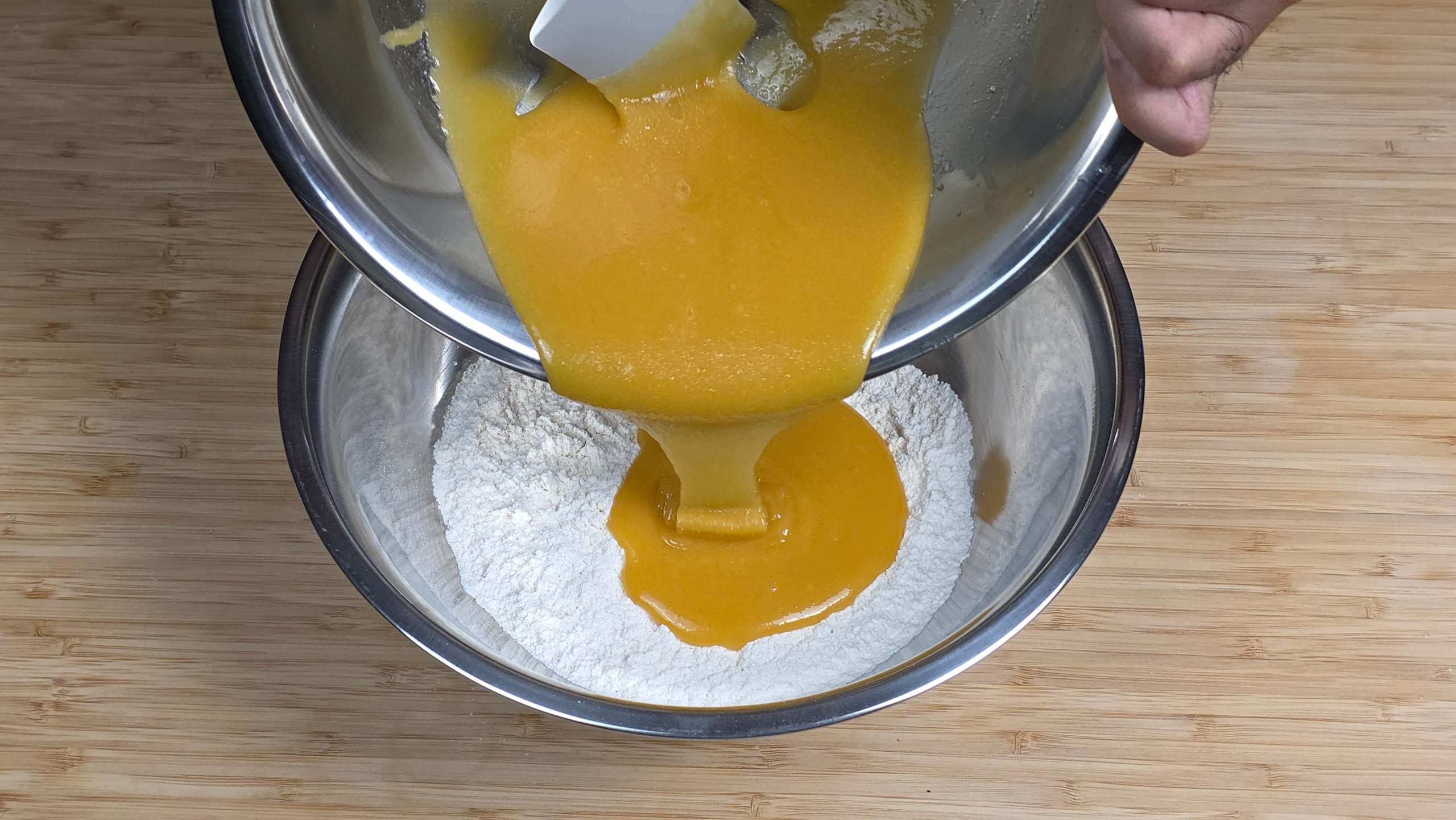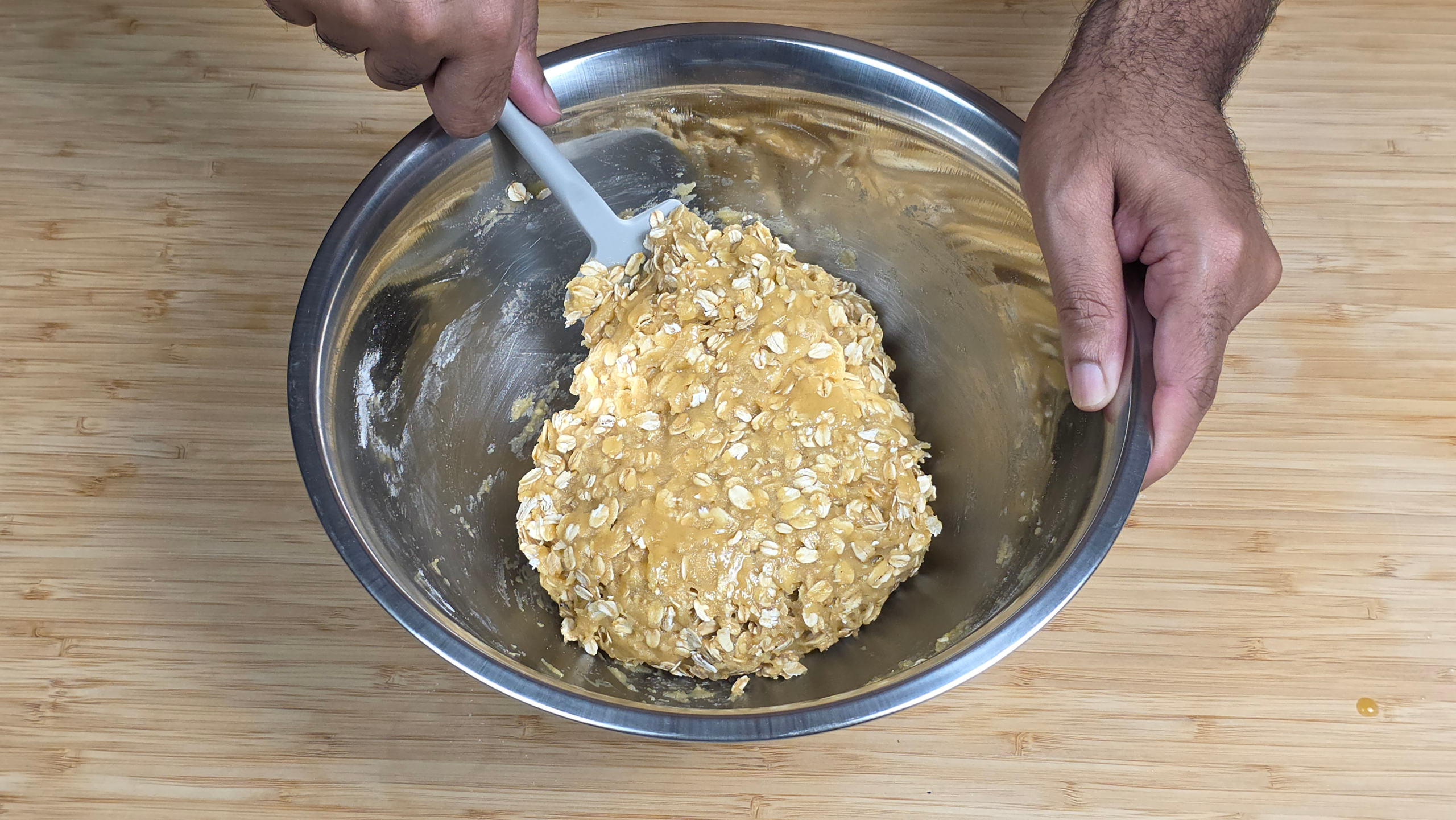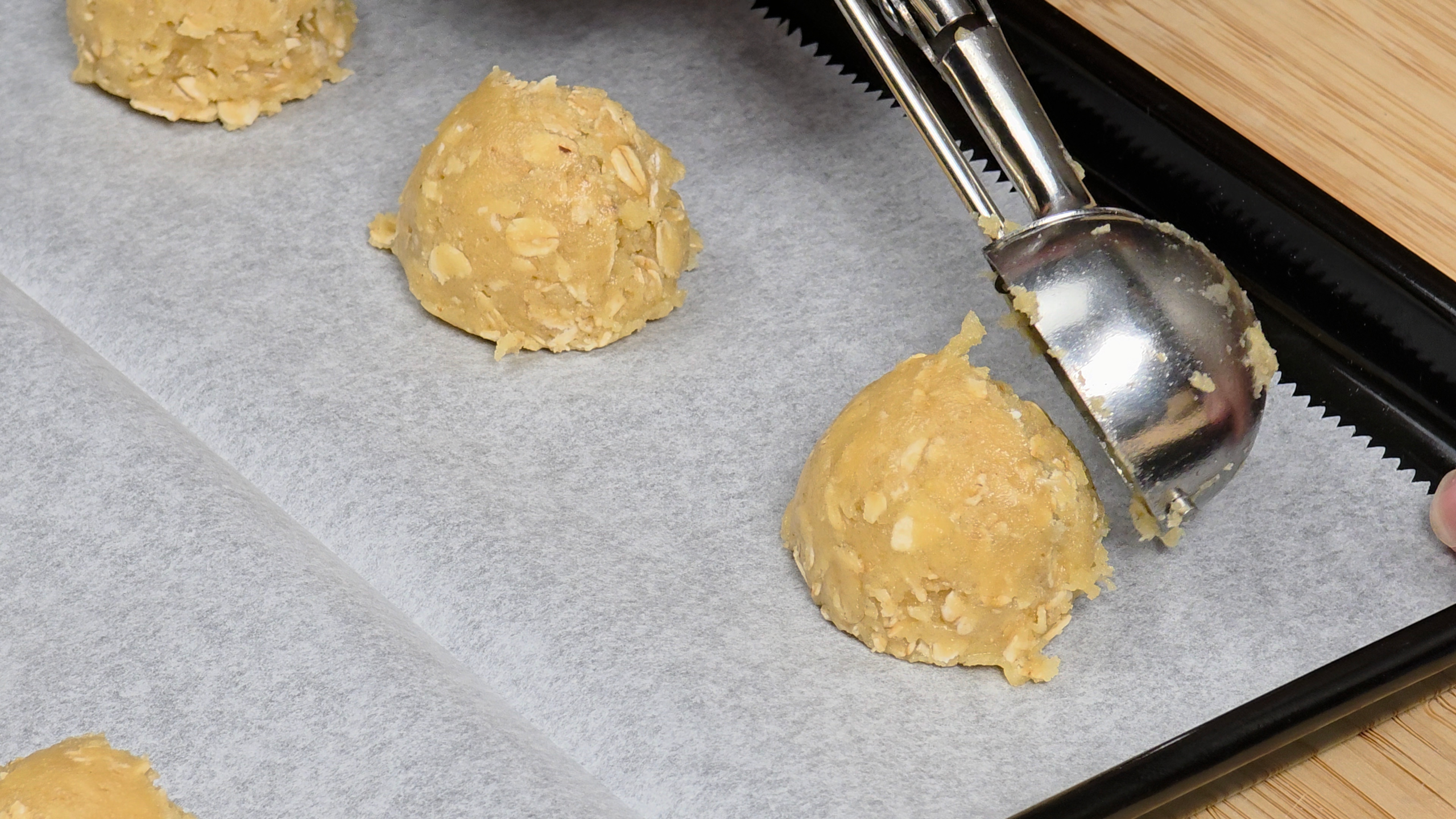There are so many different variations to so-called Oatmeal Cookies. To name a few, you have Oatmeal Raisin Cookies, Oatmeal Peanut Butter Cookies, Oatmeal Chocolate Chip Cookies and even Oatmeal M&Ms Cookies. Now these variations aren’t bad (except for raisins, I most definitely hate raisins, especially in my cookies!). However, the one variation that seems to be hard to find is the plain jane Oatmeal Cookies without all the extra add-ins, which is my personal favorite. This has also been my most difficult cookie yet to test (I’ll explain why a different further down). That being said, I’m happy to share my recipe with my team #NoRaisin folks who have long been desiring good oatmeal cookies to make at home!

Key Ingredients for Oatmeal Cookies
The dough for the oatmeal cookies is made from your standard ingredients: Flour, Baking Soda, Table Salt, Sugar, Butter, and Vanilla Extract. That said, what makes this recipe stand out from the rest is the use of Nutmeg, Cornstarch and all Egg Yolks.
- Nutmeg: While Oats are technically not considered a nut (they’re a grain), they do contain a natural compound known as nitrogen heterocycles. This same compound is what gives products such as Peanuts, Almonds and Cashews their nutty flavor, and Oats are no exception to this. That being said, I tried to figure out a way I could elevate this dish, and I decided to test out this recipe with the addition of Nutmeg. What I love about the addition of Nutmeg in this recipe is that it really enhances the nutty flavor that naturally comes with the Oats. You have to be very careful with Nutmeg though, because too much of it can negatively effect the taste of any dish.
- Cornstarch: Why? For a few reasons. The cornstarch helps to soften the proteins in the flour, which limits the development of gluten helps to keep the oatmeal cookies tender as they bake. In addition, cornstarch does a great job at absorbing and holding liquid that would otherwise evaporate during the baking process, which helps the oatmeal cookies remain moist and keeps them from drying out. And the best part about Cornstarch? Despite what the name implies, Cornstarch is favorless with virtually no distinctive taste, so you don’t have to worry about your oatmeal cookies tasting like corn.
- Egg Yolks: While most recipe call for using all or predominately whole eggs, I tested out this recipe with just the use of egg yolks and ended up getting a desirable result. The thing about egg whites is that they’re mostly just protein, which has a tendency to dry out baked goods. In the baking process, most of the emulsifying properties and fat that we associated with a whole egg lies entirely within the egg yolk. So ultimately, there’s virtually nothing of value lost from excluding the egg whites from these cookies. In fact, just using egg yolks alone really helps to enhance the richness of the flavor and give it a velvety texture.
And lastly, there’s one more thing I can’t stress enough. Cookies are highly sensitive to the proportion of fat vs protein (I.E. flour and egg whites) that is used. Even being off by a mere tablespoon can completely change the shape, texture and flavor. That said, I strongly advise that you use a spoon to gather your flour and even level off the top of the measuring cup with a knife. If you scoop out the flour with the cup itself, you risk packing way more flour into the cup (and eventually the dough) than what is required, thus your cookies won’t bake properly. Weighing your flour with a bowl and kitchen scale is also a perfectly fine option.
Tips for Making this Recipe
If cookies are too puffy, slam bottom of cookie sheet on flat surface. The way baking soda works, the heat in the oven will initially cause the fat in the cookie dough to melt and spread out quickly. That said, in thew final few minutes, the baking soda will be activated and the cookies will really puff up. This is due to all of the Carbon Dioxide that has built up from the baking soda that has dissolved. That said, if they’re too puffy for your liking, when you first take them out of the oven, forcibly slam the bottom of your cookie sheet on a flat surface. This will release the air that has built up in the cookies.
Allow the oatmeal cookies to cool for a minimum of 10 minutes after removing from oven. The inside of the oatmeal cookies will continue to set and coagulate even after you remove them from the heat. If you attempt to remove & eat the oatmeal cookies too soon while they’re still hot, you risk having them fall apart.
For the best results, use parchment paper. There are some recipes that suggest you can place your cookie dough on greasy (or lightly greased) cookie sheets. The reason I advise against this is because this can cause both the bottom of the cookies and the edges to overcook and burn (thus, in my humble opinion, making the cookies unappetizing). Meanwhile, if you decided to wing it by just placing the dough on a care cookie sheet, you risk having the cookies stick onto the cookie sheet as the fat melts then re-solidifies during the baking process. I strongly advise placing the cookie dough on parchment paper to ensure minimal sticking, sufficient browning as well as the right amount of spread.
Use a cookie scoop. Why? For one reason, it’s a way to avoid having to scoop & roll the dough for the oatmeal cookies and get your hands dirty. But also, a scoop will ensure all of the oatmeal cookies are the same size and they bake evenly. In fact, as extra insurance, I even like to level the dough in my cookie scoop with a knife (but doing this is optional). For this recipe, I used a 2 TBSP (1 oz) cookie scoop, and do note servings will vary if you use a smaller or large cookie scoop.
Bake a test cookie (or two). The problem with many home ovens, especially if they’re older, is that not all of them are properly calibrated to heat to the correct temp (some of them run too cold or even too hot). To ensure you may not have to adjust the temp higher or lower by about 25 degrees, it may not hurt to test some of the dough for the oatmeal cookies before attempting to bake it all at once to ensure they come out per the recipe instructions given.
Frequently Asked Questions
Can I substitute Old-Fashioned Oats for Quick or Steel-Cut Oats?
Quick or Steel-Cut Oats have not been tested for this recipe, and I *DON’T* recommend using them as a replacement for old-fashioned oats. The main issue with quick oats in particular is because they’re made to accommodate fast or even instant preparation of Oatmeal cereal, they will have a tendency to turn into mush once you combine it with the wet ingredients and will not hold their shape nearly as well. So I can say with high confidence that doing so will for sure change the texture of the oatmeal cookies.
Is it required to chill the dough?
While there are many recipes that require you chill the dough, the nice about this one is that is does *NOT* require any chilling prior to baking. In fact, I recommend placing these into the oven as soon as all of the ingredients are just combined and the dough is made. Because of all the oats that are in this recipe (which suck up moisture like a sponge), the dough will have a tendency to dry out quickly and the fat won’t melt as efficiently while baking, which is critical in order to get the oatmeal cookies to spread out & flatten.
Can you substitute Oil for the Butter?
The answer to this question always gets tricky.
I do understand that not everyone is able to eat dairy products and that butter is simply not an option for such individuals. In such cases, you *COULD* replace the butter with a cooking oil, but with a couple of important caveats. For starters, while cooking oils and butter are both different types of fats that can be used in baked goods, their fat composition is not entirely equal. Cooking oils tend to have virtually no water in them (thus is 100% fat), whereas Butter typically has a water content of 20-25% (depending on the brand). So in the event you attempt to substitute the butter for cooking oils, I’d advise only using 75-80% of the amount of cooking oil.
The other caveat is that the use of cooking oils will change the flavor profile of the cookies. Seed oils (I.E. Vegetable Oil, Canola Oil, etc.), are known to be neutral-tasting, meaning they have no flavor. So you will be losing the subtle nuttiness / sweetness in your cookies that Butter offers. But then you also have your non-seed oils such as Coconut, Avocado or Olive Oil. These oils are *NOT* neutral-tasting, which means if you use them, you may end up with cookies that taste like Olives, Avocados or Coconuts, as the oils will overpower the favor of the other ingredients
All of that said, the short and sweet answer I can give you is I *DON’T* recommend it. For a more detailed answer, see above.
Can you freeze the dough? And if so, for how long?
Unlike most of my cookie recipes, while testing this one, I discovered that the oatmeal cookie dough frankly don’t bake well after being frozen. The reason why is because the dough is already fairly thick when you finish combining all of the ingredients (since oats suck up the moisture from the egg yolks & butter so easily), and the freezer if anything can dry up that moisture even more if they’re not wrapped up properly. This poses a huge problem once you place them in the oven because if the oats are allowed to suck up too much moisture too quickly, the dough won’t spread effectively. So the short answer to this question is I don’t recommend freezing the dough.
How long can you store oatmeal cookies without freezing?
As long as the oatmeal cookies are stored in an airtight container or bag, they should be safe to eat for at least 3 days. After 3 days, they may begin to lose their flavor & texture. Once 5 days have passed, I would advise that you dispose of the oatmeal cookies as they may no longer be edible.
Try These Other Cookie Recipes
-
Best Crispy & Chewy Chocolate Chip Cookies
-
Best Sugar Cookies From Scratch
-
Best White Chocolate Macadamia Nut Cookies
-
Best Soft & Chewy Peanut Butter Cookies
-
Best Pillowy Snickerdoodle Cookies
-
Best Chewy Gingersnap Cookies
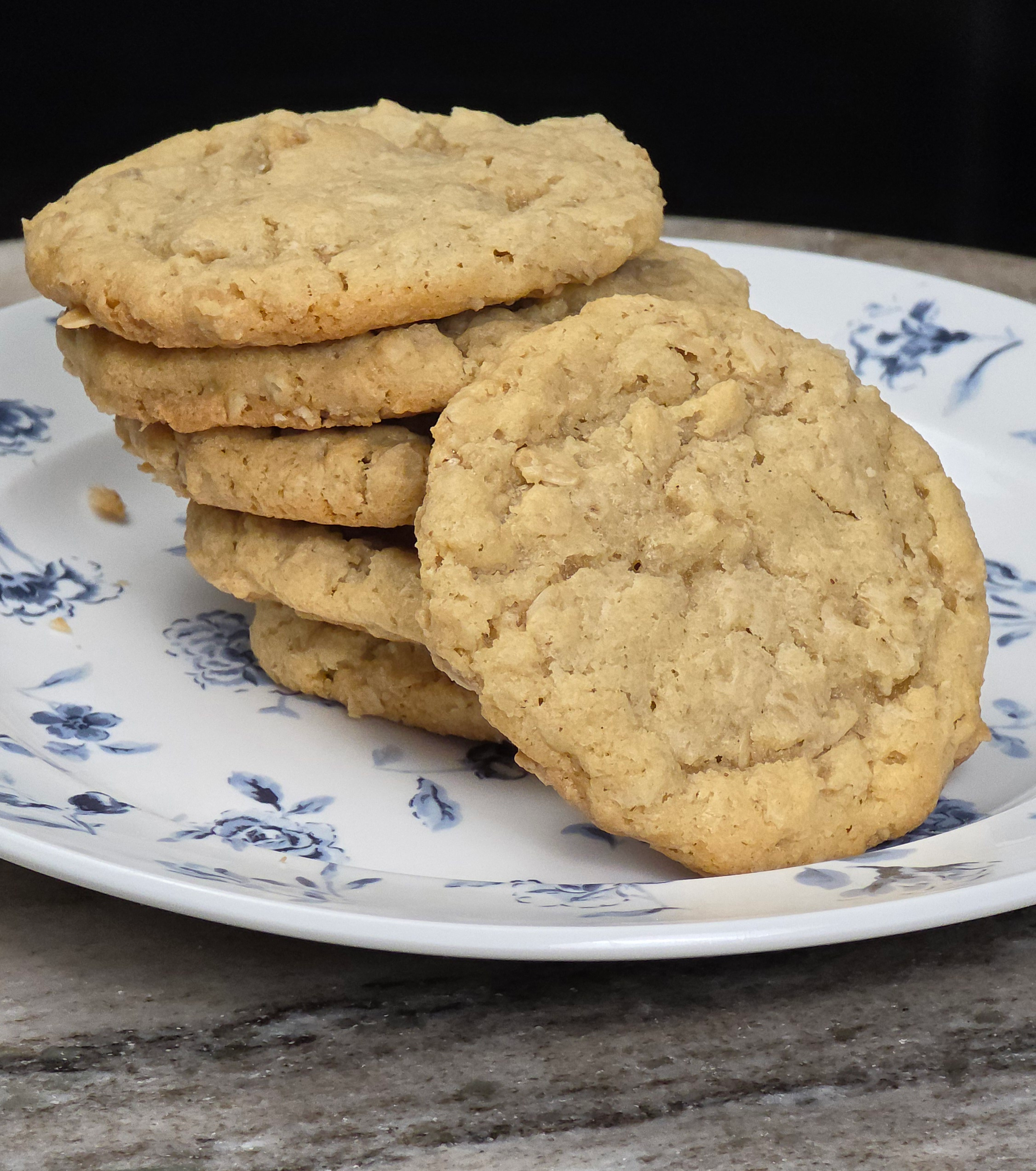
Best Oatmeal Cookies (NO Raisins)
Equipment
- Whisk(s)
- Plastic Spatula (s)
- 2 Large Mixing Bowls
- Parchment Paper
- Baking Sheet(s)
- Measuring Cups/Spoons
- 1 Knife
- 2 TBSP Cookie Scoop
Ingredients
- 1 1/4 Cups All-Purpose Flour (Spooned & Leveled)
- 1 1/2 Cups Old-Fashioned Oats
- 1 TSP Cornstarch
- 1/4 TSP Ground Nutmeg
- 1/2 Cup White Granulated Sugar
- 1/2 Cup Light Brown Sugar
- 1/4 TSP Iodized Salt
- 1 TSP Baking Soda
- 14 TBSP Melted Unsalted Butter (3/4 Cups + 2 Tablespoons)
- 3/4 TSP Vanilla Extract
- 2 Extra Large Egg Yolks
Instructions
- Combine dry ingredients (Flour, Baking Soda, Cornstarch, Nutmeg and Salt) in large mixing bowl.
- Whisk dry ingredients until combined.
- Add butter + sugar in a separate large mixing bowl.
- Whisk butter with sugar until well-combined (approx. 60 seconds).
- Add other wet ingredients (Egg Yolks, Vanilla Extract) to combined Butter + Sugar and whisk for 30 seconds each until combined.
- Add wet ingredients into bowl with dry ingredients and fold until just combined.
- Fold Oats into cookie dough until just combined.
- Preheat oven to 350*F and line cookie sheet with parchment paper.
- Using cookie scoop, place dough onto cookie sheet and ensure they are evenly spaced.
- Place cookie sheet(s) in oven and bake for 10 minutes.
- Allow cookies to cool before serving.



